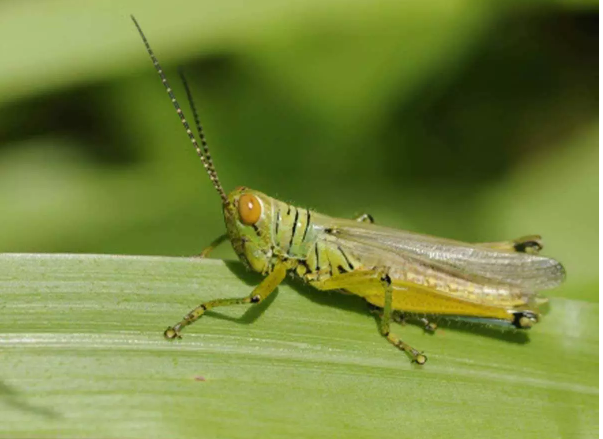The Red List of Threatened Species, founded in 1964, is the world’s most comprehensive inventory of biological species’ global conservation status.Although rich in diversity and threatened to the verge of extinction, this Red List still ignores the Indian grasshoppers. The Indian community of 1033 grasshoppers have been mostly documented by foreign researchers only. Taking heed to these neglected species, The Grasshopper Specialist Group of the International Union for the Conservation of Nature (IUCN), is starting to work on the Red List Assessment of grasshoppers in India for the first time.
The assessment will include a new grasshopper species discovered recently in the Eravikulam National Park in Kerala’s Idukki district under the guidance of Mr Dhaneesh Bhaskar, regional vice chair for Asia, IUCN SSC Grasshopper Specialist Group. Bhaskar and his crew have started the Red list assessment of India’s grasshoppers in the Nilgiri Biosphere Reserve (NBR), in the border of Tamil Nadu, Kerala and Karnataka. The project is funded by Mohamed bin Zayed Species Conservation Fund and ground support is provided by Chennai-based Care Earth Trust.
NBR is the official nature reserves under the management of Tamil Nadu, Kerala and Karnataka. Bhaskar and his team listed 30 endemic species of the NBR in the protected area under these three states. The team will assign the conservation status to each species in the year 2021. His team discovered a new species called Tettilobus trishula, commonly known as Shiva’s pygmy trishula. It shapes its protrusions on its pronotum as the trident, the weapon of Hindu deity.
Bhaskar and team have also rediscovered a species labelled as Pouya suspecta Bolivar found in the border of Kerala and Tamil Nadu 100 years ago but never published as a new species in the paper. The team observed the species in the natural habitat of the Western Ghats. It documented the specimen in 2018 in the Eravikulam national park. The park has high-altitude grasslands interspersed with sholas (southern montane wet temperate forest) spread over 97 square
kilometres. The team also noted that the Tettilbus trisula was seen on the tree’s bark in the shola forest ecosystem of Eravikulam.

